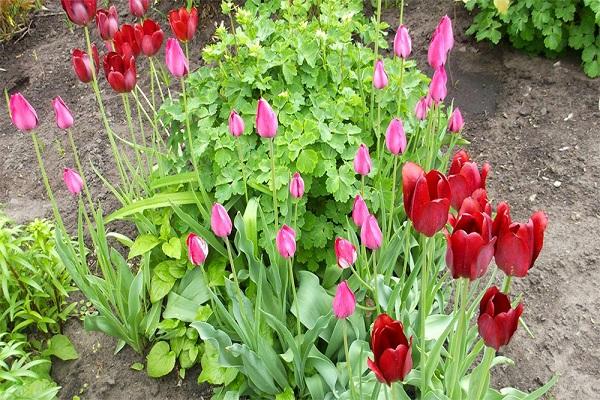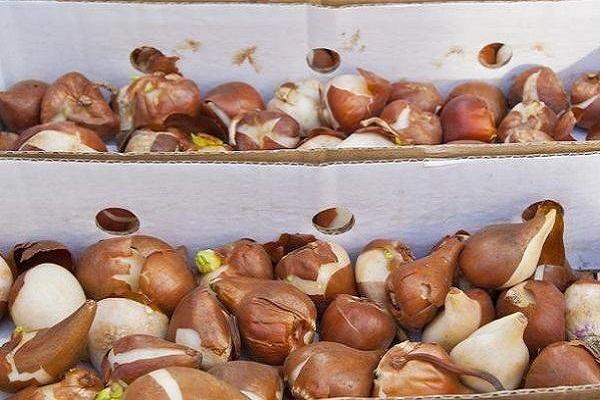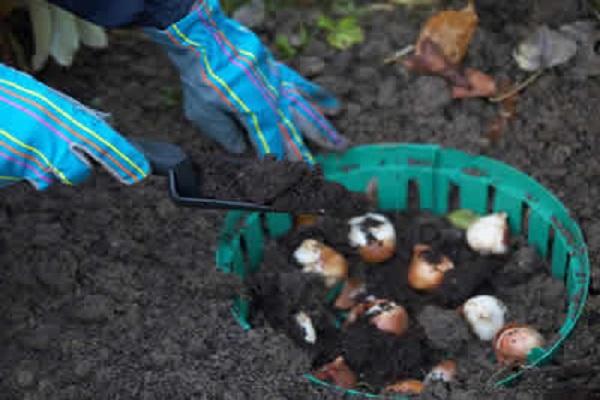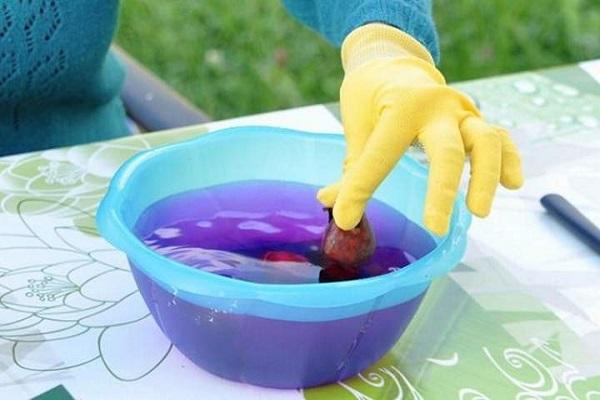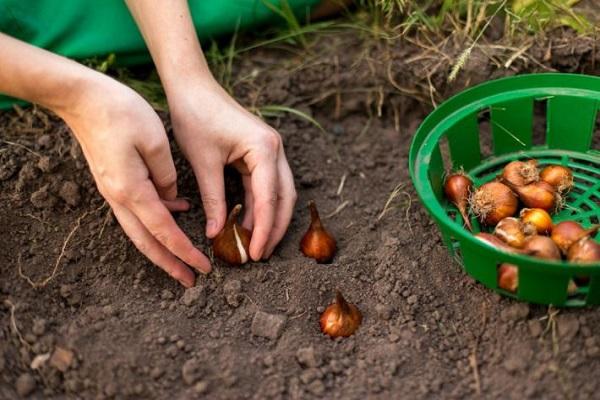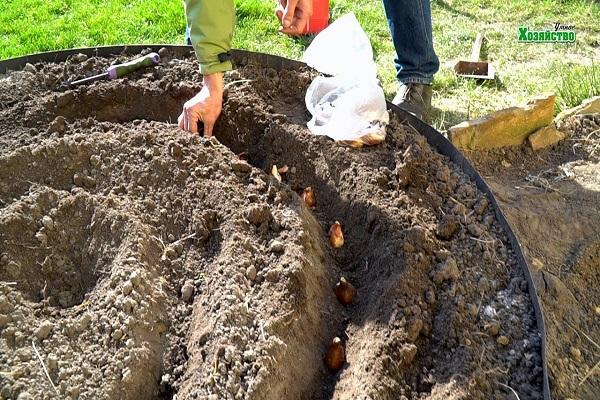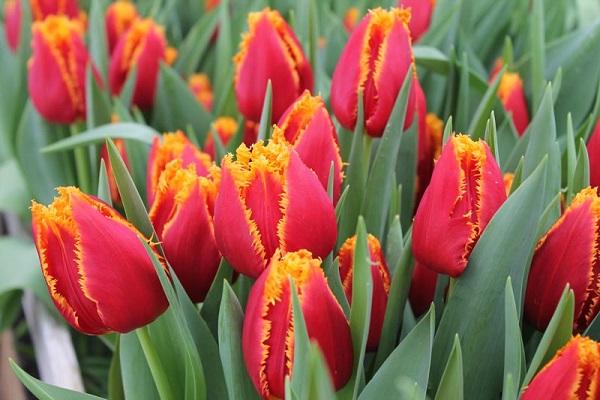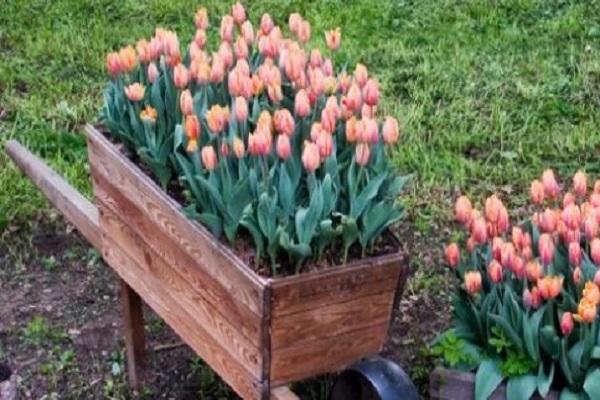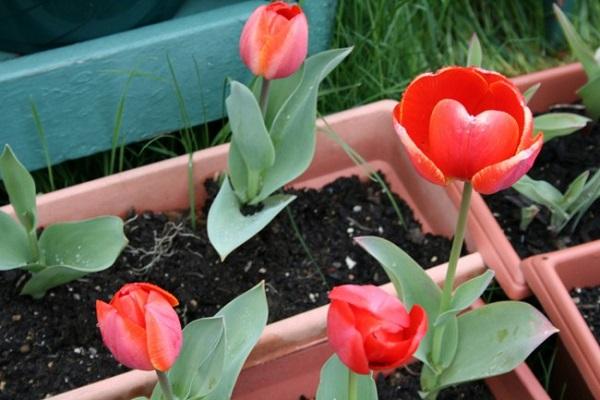You need to plant tulips in the Urals in the fall, when it is not yet so cold outside, the first frosts have not set in, and the air temperature has not reached 3 degrees. Such competent planting of tulips in compliance with all the rules of agricultural technology allows us to expect timely budding and the process of blooming of these delicate flowers in the spring. But even experienced flower growers can make mistakes in the timing of planting tulips, especially in the territories of Siberia and the Urals, with their special climatic conditions.
- Features of planting tulips in Siberia and the Urals in autumn
- How to store tulips before planting in the fall?
- How to plant correctly?
- Preparing tulips
- Treatment of bulbs before planting
- Selection and preparation of a landing site
- At what depth should I plant?
- Planting scheme
- Alternative landing methods
- Tiered principle
- Using containers
- Further flower care
- Preparing for winter
Features of planting tulips in Siberia and the Urals in autumn
And indeed, despite many years of gardening experience and knowledge about the timing of planting flowers, tulip lovers also make mistakes and mistakes in determining such periods. Planting bulbs before winter, later than expected, threatens tulips with weak rooting before the onset of cold weather, and therefore a delay in further development and flowering.
Early planting of flowers leads to untimely germination and, as a result, to freezing of sprouts, their rotting, and in the spring - to late and weak flowering.
Therefore, it is necessary to plant tulips in a particular region within the prescribed time frame.
Planting flowers in the Urals is carried out regionally:
- In the Middle Urals, planting tulips begins in the last ten days of August and lasts almost until mid-September.
- In the territories of the Southern Urals, planting of the described flowers begins in early September and lasts until the third ten days of October.
- In the Northern Urals, tulips are planted until mid-September.
Due to early frosts in Siberian territories, flower bulbs must be planted as early as August.
How to store tulips before planting in the fall?
To better preserve the bulbs from spring to autumn, gardeners take the following actions:
- tulip bulbs are processed - roots, clods of earth, adhering leaves are separated;
- planting material is soaked in a manganese solution;
- the onions are dried;
- filled with dry sawdust to absorb excess moisture.
Certain storage conditions are also observed:
- temperature conditions varying from 20 to 25 degrees Celsius;
- reducing the usual storage temperature of planting material closer to autumn to 15 degrees Celsius;
- Ventilate the room to avoid excessive humidity.
How to plant correctly?
From the moment the bulbs are planted until they are completely rooted, about a month should pass. Therefore, it is necessary to begin deepening the planting material no later than mid-September.
However, experienced gardeners take into account not only the above-mentioned periods for planting tulips, they also select suitable weather conditions and the optimal soil temperature of 8-10 degrees.
Preparing tulips
Before planting, the available material is sorted by size and processed:
- by visually inspecting the bulbs for rotting and possible damage;
- method of removing deformed or weakly adherent onion peels;
- by processing planting material using products specially designed for this purpose.
Important! Bulbs stored for a long time can accumulate all kinds of infections and diseases under the dry husk. Therefore, before planting, the upper layers of the bulbs are removed and removed.
Clean onions are more quickly saturated with nutrients and essential beneficial elements.
Treatment of bulbs before planting
To disinfect planting material, disinfection is carried out using certain means. Solutions are prepared:
- From potassium permanganate (2 grams) diluted in water (10 liters). The bulbs are soaked in the solution for at least an hour.
- Based on the drug Vitaros (2 milliliters) and water (1 liter). The material is processed for half an hour.
- Using Fundazol (30 grams) and water (10 liters). Flower bulbs are soaked in the solution for about an hour.
- Based on a solution of Epin (1 drop) and water (2 liters). Planting material is immersed in the mixture for about 24 hours.
The proposed dosages are enough to process 10 onions, no more.
Selection and preparation of a landing site
The place for planting tulips should be well lit and at the same time shady. Planting material should be buried in areas with a slight slope for the timely outflow of melt water.
The soil must be fertile and not acidified. The site for plantings must be prepared ahead of time by loosening the soil and adding fertilizers in the form of humus or compost.
The place for planting tulips needs to be changed from year to year, and flowers should not be planted in places previously occupied by onions, asters, lilies, and gladioli.
At what depth should I plant?
Before winter, it is necessary to bury the bulbs in the soil no more than 15 centimeters, depending on the diameter of the planting material. The classic method for determining such depth is calculated from the parameters of the height of the bulb, multiplied by 3.
According to the rules, large planting material is planted in the very middle of the flowerbed, while small onions are planted at the edges. Growing seedlings, so as not to interfere with each other, are planted taking into account the distance between each flower. Between large heads the distance should be about 10 centimeters, between small specimens - about 5-8 centimeters.
Planting scheme
In the Urals and Siberia, tulips must be planted strictly according to the scheme. In open ground, planting is carried out in the following way:
- rows are raked or holes are made in the form of holes at a certain interval (about 25-30 centimeters);
- the depth is calculated from the calculation: for small specimens - 7-10 centimeters, for medium-sized bulbs - about 12 centimeters, for large heads - no more than 15 centimeters;
- planting material is buried bottom down, at a distance of about 10 centimeters from each other;
- all plantings on top are covered with earth.
Alternative landing methods
So, autumn planting of tulips can be done in grooves, in rows, or in other, more interesting, ways suggested below.
Tiered principle
Planting tulips using the tiered method involves planting the bulbs, depending on their size, at different depths. The onions are planted not in rows, but on top of each other.
The largest tulip heads are placed at a depth of about 15 centimeters. Above them, using a checkerboard pattern, medium-sized specimens of the described flowers are planted. In the very top layer of the earth there are small onions.
For the beauty of the flower bed and variety, with such a planting, one of the tiers of tulips can be replaced with other bulbous flowers - lilies, hyacinths, daffodils.
Using containers
Another way to grow tulips involves using plastic containers.
A so-called basket-container with planting material already placed inside is literally dug into the ground. This planting better protects the flowers from all kinds of diseases and invasions by pests.
And such plastic containers do not have to be immersed in the ground; they, with flowers already planted inside, can be placed anywhere, even throughout the entire plot.
Further flower care
After planting and rooting, tulips require appropriate care:
- regular watering, especially during the dry season;
- loosening the soil layer to prevent the formation of a so-called crust on the surface;
- sprinkling flowers with fallen leaves and dried grass before frost;
- application of fertilizing and fertilizers with nitrogen, potassium and phosphorus.
Preparing for winter
Preparing tulips for the winter cold includes protection from frost and rodent infestations.
To protect yourself from the cold you need:
- on the eve of winter, cover the tulips with a layer of dry grass, peat and coniferous mass, and dry tree foliage;
- sprinkle with snow - such a step will naturally protect the tulips from frost.
From attacks by rodents, improvised means are used, in the form of covering tulips, for example, with spruce branches.

